We already know what you are thinking. "No, please, another article about Christmas markets, mercy!" And we understand you deeply. But this time we hope you can make a small exception, partly because of the fact that usually, when we tell you about Christmas markets, it is because we usually combine the market with art and culture, perhaps because the little wooden houses are located in artistically evocative places. Inopportunely, some will say: but by now it is no longer Christmas without markets, and one can also willingly tolerate a presence that in any case is always synonymous with warmth, festivity, merriment. Besides, if the market is respectful of the place, one can have nothing to object to. So, having made this small premise, let’s get into the subject: we wanted to tell you that in Valsugana, and to be precise in Levico Terme, a handful of kilometers from Trento, there is a Christmas market(here is the official website) that is worth a visit if only for the place where it is located: the Hapsburg Park of Levico.
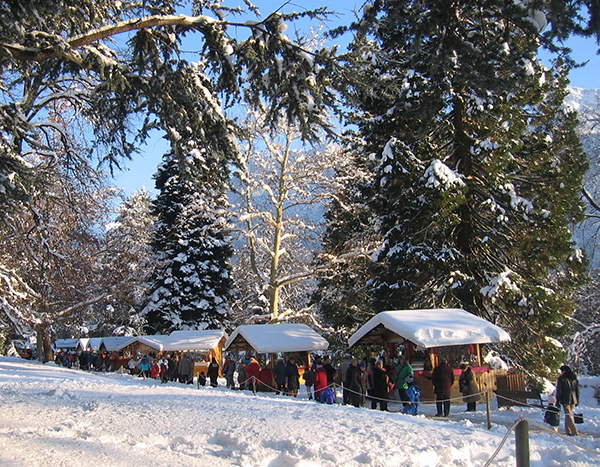 |
| Levico Terme Christmas market. Photo from www.visitlevicoterme.it |
To know what it is and what the Habsburgs have to do with Levico, it is necessary to go back to 1896, a year in which the area of Trent and its surroundings was still more or less firmly in Austrian hands and in which theAustro-Hungarian Empire was continuing a work it had undertaken some years before: to provide itself with an efficient and widespread railway network. In particular, in the year 1896 trains, from Trent, finally arrived in Levico as well, with the immediate consequence that this town, known for its hot thermal waters, became a destination for tourism that until then had been the prerogative of other, more easily accessible areas. These were the years in which the middle and upper middle classes discovered leisure stays in localities that were beginning to equip themselves to accommodate hitherto unknown flows, due to many factors: a growing economy, shorter distances thanks to the emergence of means of transportation that were faster and more advantageous than those of the past, and the birth of the first associations devoted to tourism (the Touring Club Italiano, for example, was founded in 1894). Levico then becomes a tourist destination on the edge of the most popular area in the entire Empire, namely the Tyrol, and it is therefore decided to modernize it so that it can meet the renewed needs and meet the tastes of its visitors.
The decision to develop spa tourism, in fact, had been studied almost at the drawing board, not least because Levico was in competition with towns farther north (think, for example, of the spa of Merano): a building society, the Levico-Vetriolo-Heilquellen, was therefore formed, headed by a Berlin entrepreneur, Julius Adrian Pollacsek, who was not only concerned with developing the spa facilities, but also worked to endow the town in Trentino with a modern park that could become a place for pleasant walks in all seasons. The land on which the park would be built was purchased in 1898: the idea was to build a Grand Hotel there (a purpose later realized) and surround it with sumptuous gardens. Landscape architect Georg Ziehl (1873 - 1953), also from Berlin, is commissioned to design the park. The hotel opened in 1900, while the park was opened five years later, in 1905. Ziehl had envisioned a park that would respond to the fashion of late 19th-century gardens, which wanted them ordered according to strict harmony, possibly gathered around precise geometric shapes. Gardens, in short, with a classical setting, which had nothing to do with the English gardens developed in the late eighteenth century. In addition, it was decided that the plant species housed in the park would be those typical of the Trentino region: in each season, therefore, it is possible to see different blooms, and the park even today is tinged, at all times of the year, with elegant and balanced colors that reflect the ideas of its designer. Ziehl had envisioned a garden developed around a central square, with paths that would run from it in the four different directions, toward the corners, and then join the Grand Hotel that occupies the northwestern end of the garden.
The park has since been extensively remodeled in the following decades, but there are some elements that have remained unchanged, such as the elegant entrance portal closed by an equally elegant Art Nouveau gate, facing the Station Avenue, or the Villa Paradiso, a refined building designed to house the staff dedicated to maintaining the garden, and again some of the trees, especially the most impressive ones: in fact, the Hapsburg Park in Levico is home to some centuries-old beech trees that brightly color all this magnificent and relaxing spa garden in autumn. At this point you may be wondering: why is it called “Hapsburg Park”? Well, first of all because it was built entirely at the end of the Habsburg era. And then because Levico Terme was a destination for several members of the imperial family: it seems that even Sissi and Franz Joseph were regulars in Levico, and fans of the Habsburg stories will therefore be pleased to imagine them strolling through the narrow streets of the town (Sissi, who was killed in 1898 by Luigi Lucheni, would not have made it to the park in time anyway).
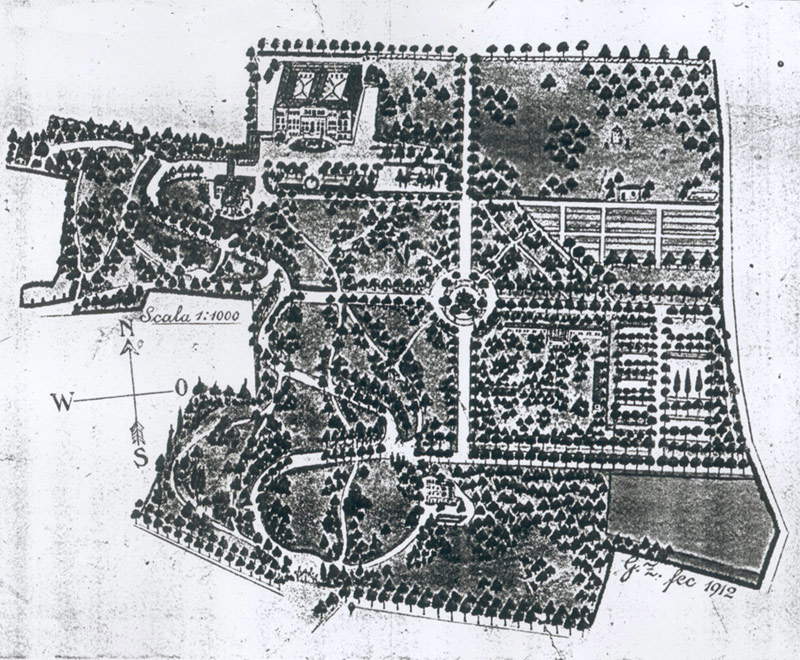 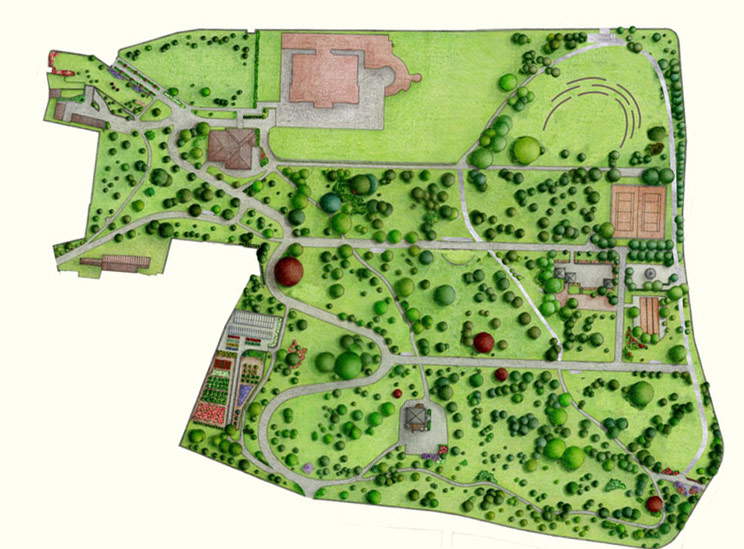 |
| The park according to a 1912 plan (top) and the park today. Images taken from the website of the Province of Trento. |
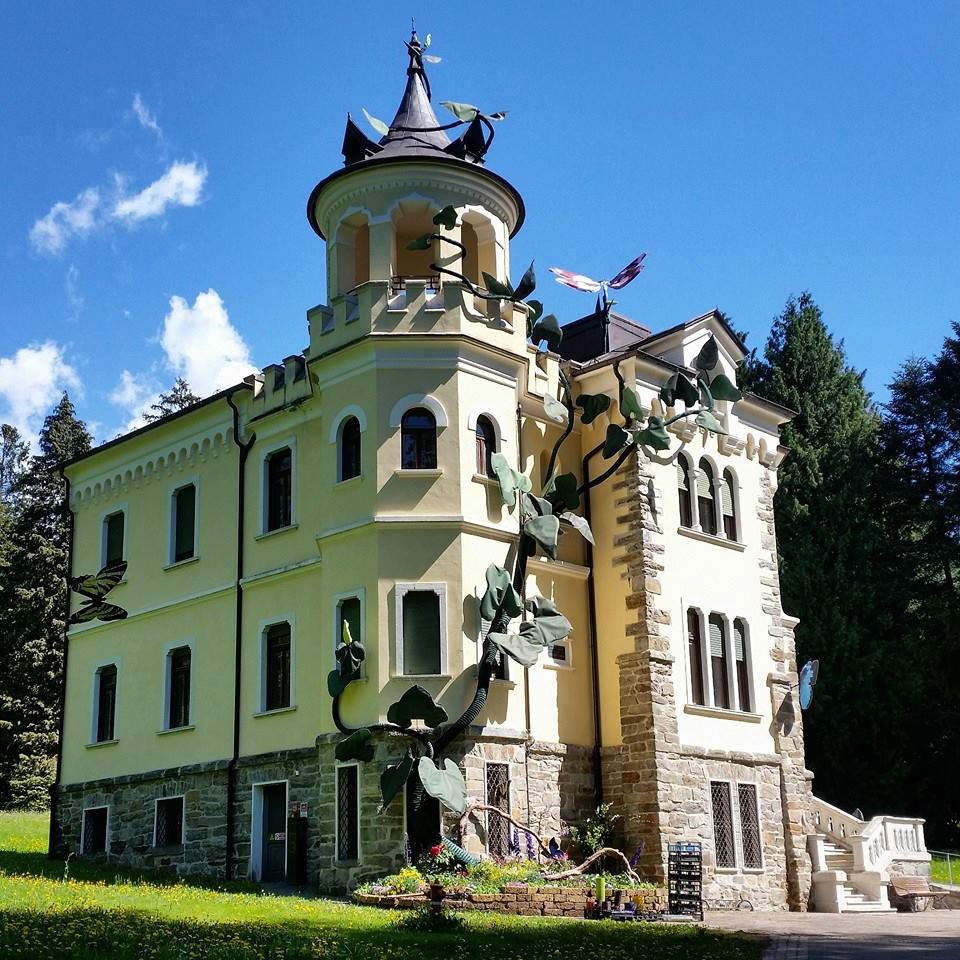 |
| The Villa Paradiso (the creeper is a temporary installation). Photo from www.visitlevicoterme.it |
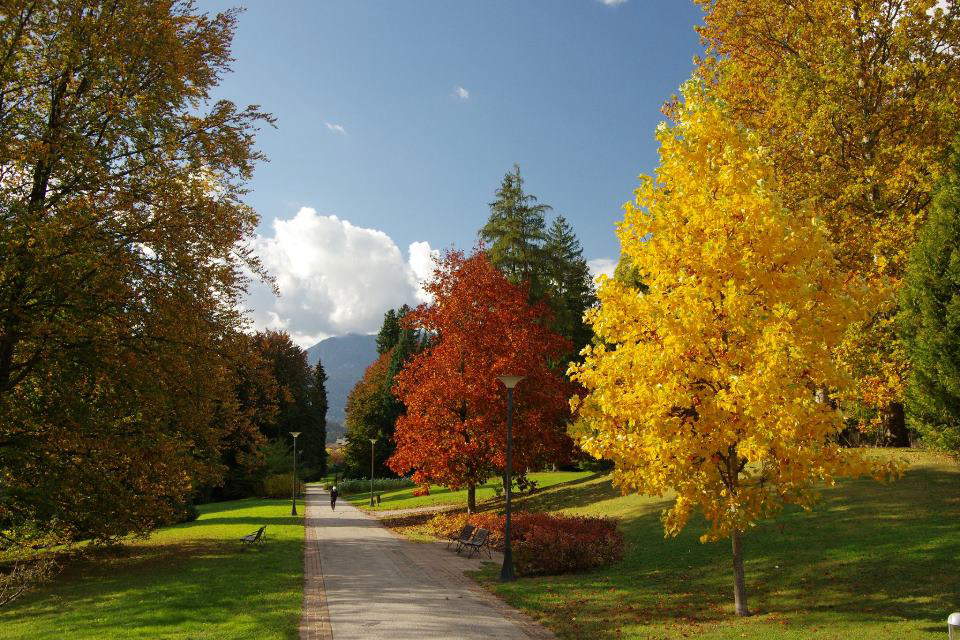 |
| The park in autumn. Photo from visitvalsugana.it |
Since 2004, the municipal administration of Levico Terme has decided to choose the Hapsburg Park as the venue for the local Christmas market (the 2016 edition takes place from November 19 to January 6, 2017): the characteristic little wooden houses are placed along the driveways (those that remain from the original design), and it is interesting to point out that visiting this market not only amounts to walking through one of the most interesting historic parks in the region and having the classic pre-Christmas experience of hunting for tree decorations, gifts for friends, toys for the children, and generous rations of mulled wine with which to endure the cold of Trentino, but also to spending a few hours in the pursuit of art. This is because the Levico Terme market hosts numerous events, including two art festivals: the first is called EncontrArte and is an international symposium dedicated to wood sculpture. It is therefore possible, as in every symposium, to see the artists at work and perhaps learn some techniques. The second is the exhibition of nativity scenes, which will last until the end of the market. But that’s not all, because just a few kilometers from Levico is home to Arte Sella, a permanent contemporary art exhibition that is best known for the Vegetable Cathedral, a sort of life-size Gothic cathedral but made only of plants, the work of Lombard artist Giuliano Mauri (we have never visited this sort of open-air museum of contemporary art reflecting on nature, but they assure us that if you are lucky and find snow, seeing the whitewashed Vegetable Cathedral is a worthwhile experience).
Well, we think we have told you everything! If you’re curious take a look at the official website of the Levico Christmas market: it says it all there, with dates of events and everything you need to know if you want to spend the Christmas vacations there, among mountains, snow and art!
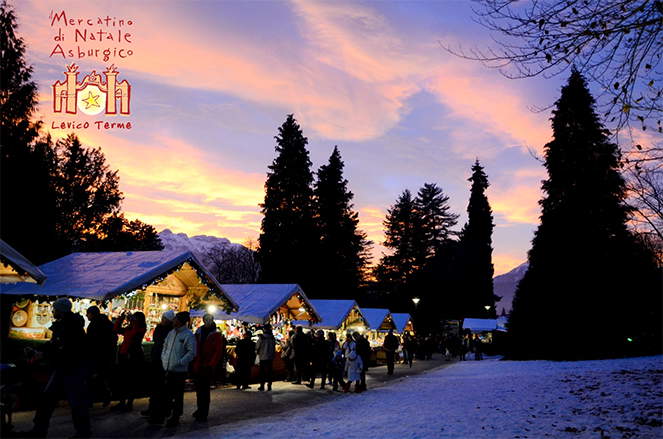 |
| Levico Terme Christmas market at sunset. Photo from www.visitlevicoterme.it |
Warning: the translation into English of the original Italian article was created using automatic tools. We undertake to review all articles, but we do not guarantee the total absence of inaccuracies in the translation due to the program. You can find the original by clicking on the ITA button. If you find any mistake,please contact us.